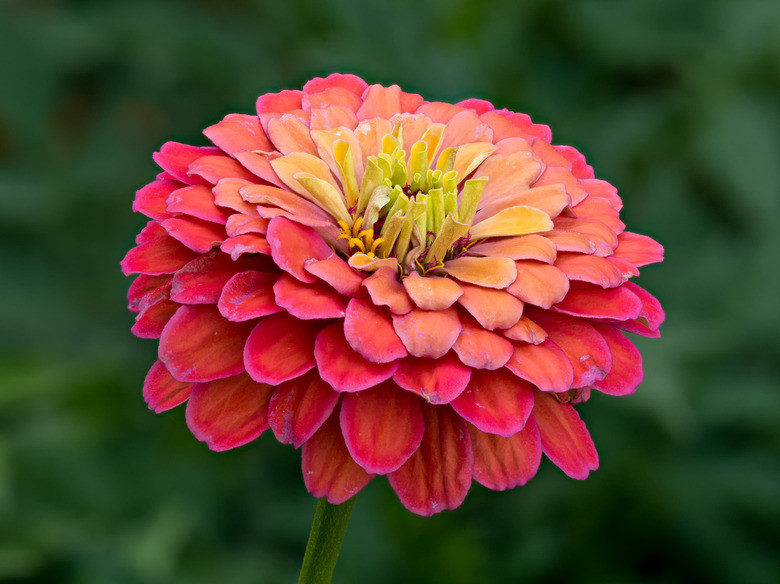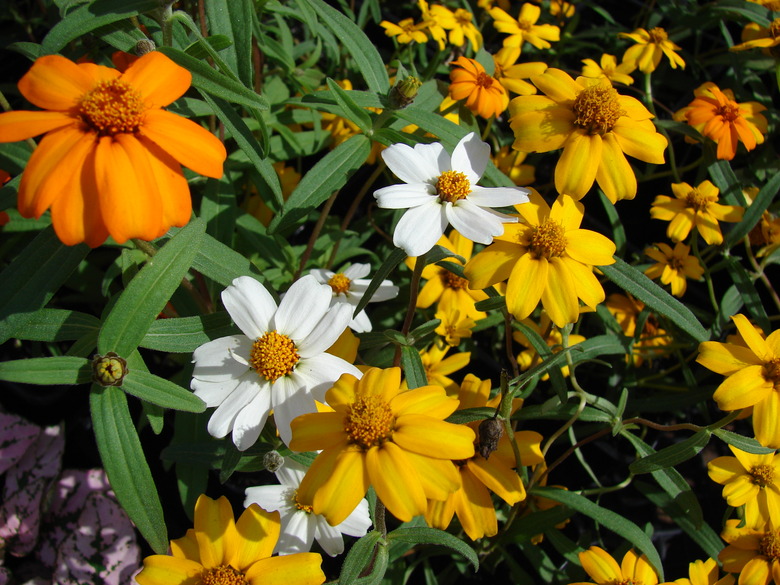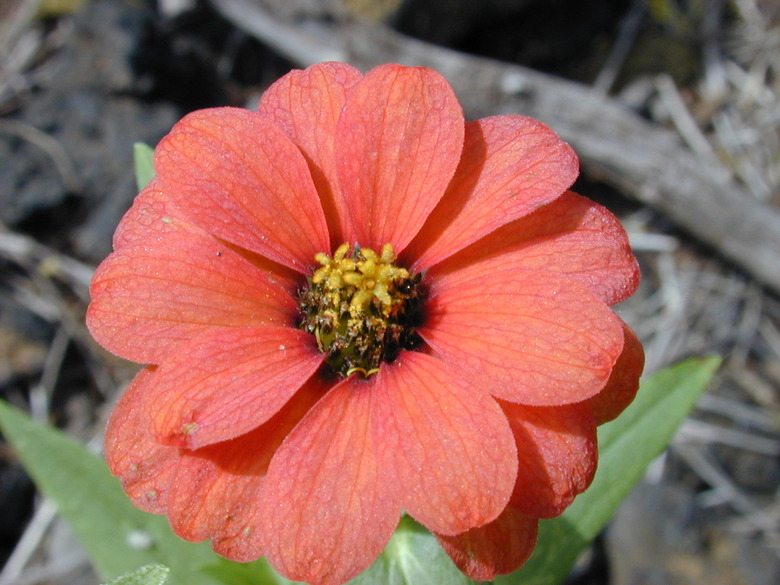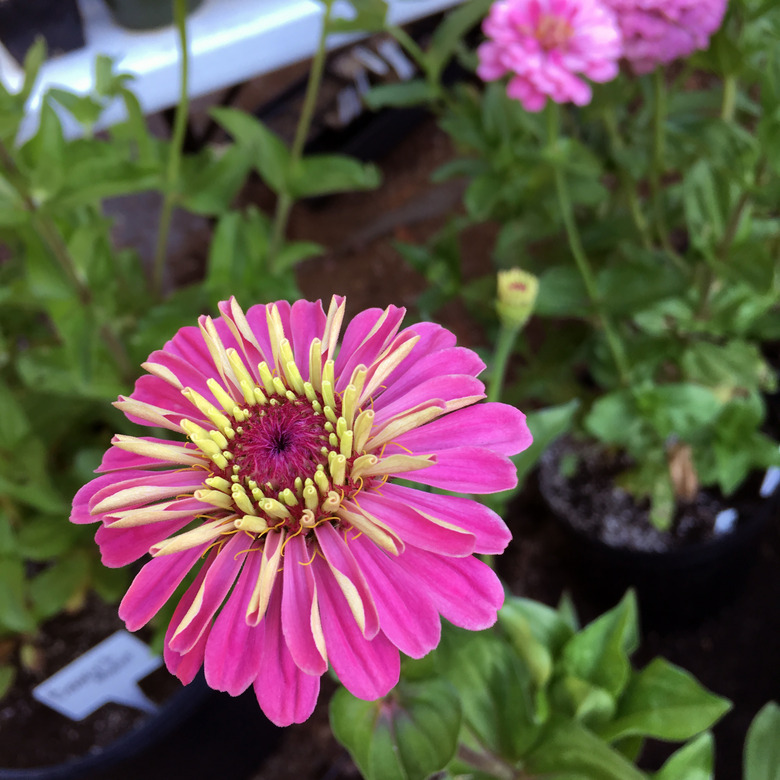The History Of Zinnia Flowers
Flowers in a rainbow of colors and patterns score the top position on the list of characteristics that make zinnia flowers such desirable garden additions. Although the genus Zinnia covers a diverse range of plants of different sizes, growth habits, flower shapes and colors, they're all descended from an unlikely progenitor that was all but overlooked by botanists for centuries.
The history of zinnia flowers begins in Mexico, where this lowly flower eventually would be launched into space and cultivated on the International Space Station.
Tip
Native zinnias were not remarkable flowers, but hybridization has resulted in many showstopper varieties.
Zinnia Native Range
Spanish conquistadors who saw zinnias blooming in their native Mexico during the 16th century were not at all impressed with these flowers. But the flowers of these native Mexican species didn't at all resemble the vibrant and showy blooms that grow in gardens today, which are the result of many years of hybridization.
Where Did Zinnias Get Their Name From?
It wasn't until the 18th century, when zinnia seeds were harvested in Mexico and taken to Europe, that they were named for a renowned German physician, Dr. Johann Gottfried Zinn, who was also a botanist and the director of the Botanical Garden of Göttingen University.
History of Zinnia Breeding
Before Spanish conquistadors observed zinnias in Mexico, the indigenous Aztecs were already cultivating them. Although exact identification of that original native species isn't definitively known, it's widely regarded as elegant zinnia (Zinnia elegans), which bears annual flowers, although it would have looked very different than this species looks today.
It's this species from which most modern-day types of zinnias have been bred, although two other annual species are also significant gene-pool contributors to zinnia breeding history: narrow-leaf zinnia (Zinnia angustifolia) and Haage's zinnia (Zinnia haageana). These two species, when bred with elegant zinnia, produced flowers with enhanced traits, such as bicolor patterns (a Haage's zinnia contribution) and improved disease resistance plus increased flower production (a narrow-leaf zinnia contribution).
A fourth species, Peruvian zinnia (Zinnia peruviana) is the first documented species that was widely cultivated in Europe, which makes it an important part of zinnia history. However, it's not one of the primary species from which modern-day zinnias have been bred. As such, it's classified as an "unimproved heirloom variety."
Zinnia Cultivars and Series
In addition to numerous zinnia species, the history of zinnias wouldn't be complete without noting there are also myriad cultivars that grace our gardens. There's a zinnia flower form, color and pattern to suit any gardener's preference and landscape design plus the option of single or double flowers.
For example, the Thumbelina series of Zinnia elegans offers a multitude of flower color options that grow on petite 4" to 5" plants. On the taller end of the spectrum, plants in the Benary's Giant series of Zinnia elegans grow to 4 feet tall and bear large flowers with 4" to 5" diameters.
For a departure from the traditional pinks, purples, reds and whites, some zinnia cultivars have more unusual colors. For yellow blooms, grow Zinnia angustifolia 'Canary Bird' or 'Crystal Yellow.' And for a unique chartreuse pop of color, grow the heirloom Zinnia elegans 'Green Envy.'
Zinnia Care
Regardless of species or cultivar, fast-growing zinnias need the same basic care, and these low-maintenance plants are easy to grow even for beginners. They grow and flower best in full sun on well-draining soil, and they're drought tolerant once established. Plant zinnias with enough spacing around plants to allow good air circulation.
Although you can set out transplants, it's very easy to sow zinnia seeds directly into garden beds in late spring (after the last frost) to early summer.
If enough air cannot circulate around zinnias, many are prone to a fungal disease called powdery mildew. Keep the foliage as dry as possible by watering at the base of the plant. Where this is a problem in certain climates, look for cultivars labeled disease resistant or mildew resistant.
Zinnias make superior cut flowers, whether you place a single stem in a bud vase or you display multiple stems as bouquets in larger vases.
Zinnias were sent aboard (the International Space Station) purely for the joy and beauty they bring to gardeners, even in space.
Growing Zinnias on the International Space Station
In 2015, a zinnia had the distinction of being the first flower to bloom outside the earth's orbit in outer space, as these plants accompanied U.S. astronauts to the International Space Station. This step of a NASA project was to determine if caring for plants can help mitigate the isolation and possible stress that astronauts may feel during long-term space missions.
Although the primary long-term objective of the project was to determine how astronauts can grow veggies in space, zinnias were sent aboard purely for the joy and beauty they bring to gardeners, even in space.



